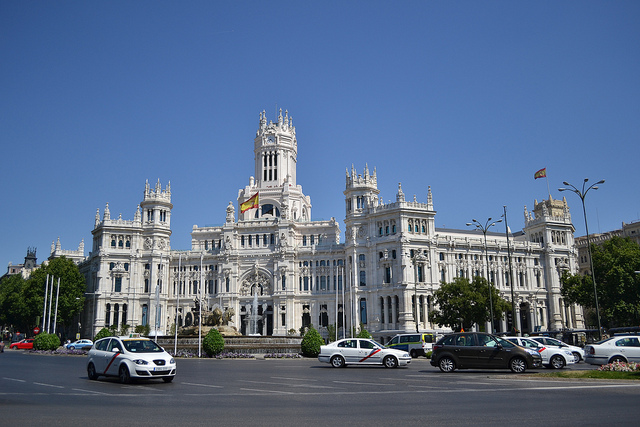
1. Reina Sofia Museum
The Reina Sofia is the national museum of 20th-century art. Originally built as a hospital, the museum was expanded in 2005 by French architect Jean Nouvel. The museum's highlights include works by two prominent Spanish artists: Picasso and Salvador Dali, the most valuable of which is Picasso's Guernica. It also holds more than 100,000 books, 3,500 audio recordings and nearly 1,000 videos of various types.

2. San Miguel Market
Originally an abandoned 1916 art gallery, renovated in 2009, the building is now a vibrant food court with grocery stores, restaurants, and cafes right in the heart of the city. Visitors can find everything, enjoy drinks and tapas typical of this country.
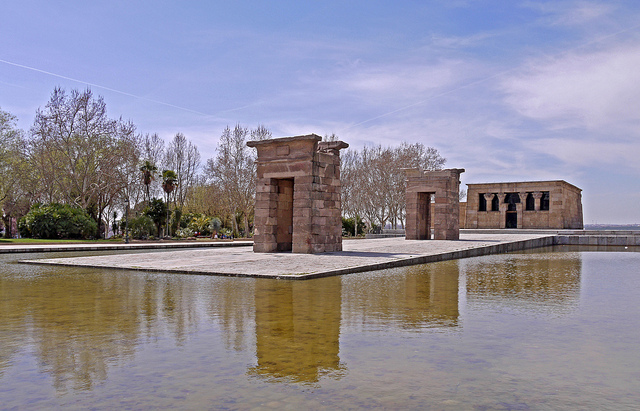
3. Debod Temple
This is an ancient temple, located in the south of Egypt, very close to the first great waterfall of the Nile, worshiping the goddess Isis. The temple was dismantled and brought back to rebuild in the most beautiful park in the capital Madrid, that is because the Egyptian government rewarded the efforts of the Spanish in preserving the Abu Simbel relic site, this further increased the value of the Debod temple.
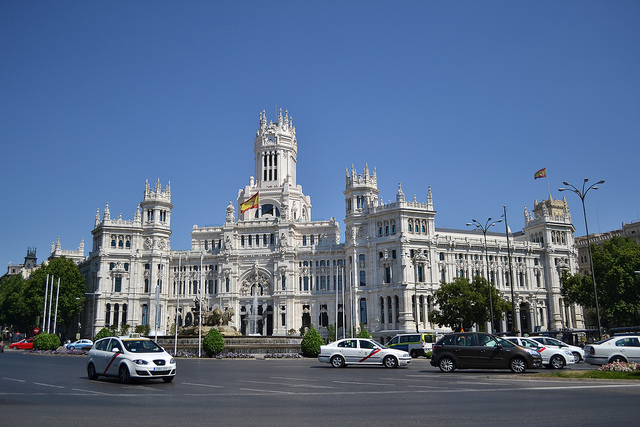
4. Plaza de Cibeles
Cibeles Square is home to some of Spain’s most famous sculptures and fountains, once considered a symbol of Madrid with the statue of the goddess Cibeles (the Greek goddess of the earth) sitting on a lion-drawn chariot. Cibeles Square is also the beginning of Madrid’s largest avenue – Paseo del Prado, where all Madrid residents love to be at dusk. There is also the “golden triangle of art” with three world-class museums: Thyssen-Bornemisza, Reina Sofia, El Prado.

5. Puerta del Sol
Puerta del Sol Square (also known as the Gate of the Sun) attracts many tourists, especially on New Year's Eve. On Puerta del Sol, one can see a clock hanging on a tower. According to local legend, every New Year's Eve, the clock will strike 12 bells to start a new year and after each bell, Spaniards eat a grape. They eat and pray for good luck and good things in the new year.
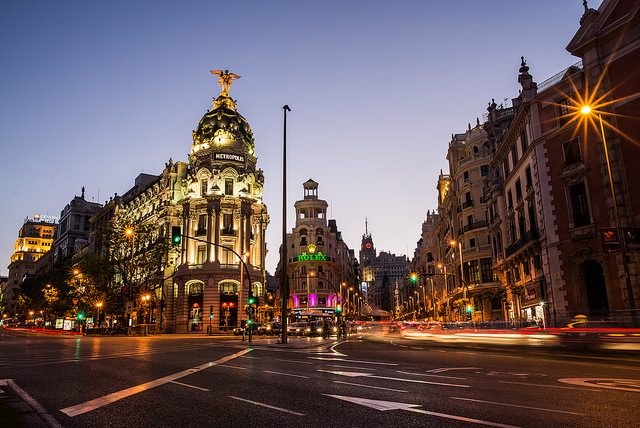
6.Gran Via
Another famous place that cannot be missed is Gran Vía, which is also the main street of Madrid, where many cinemas and theaters are concentrated. Gran Vía has many similarities with Time Square in New York because of its glitz and luxury, where people can have fun all night and admire hundreds of ancient high-rise buildings with very artistically carved and sculpted surfaces.
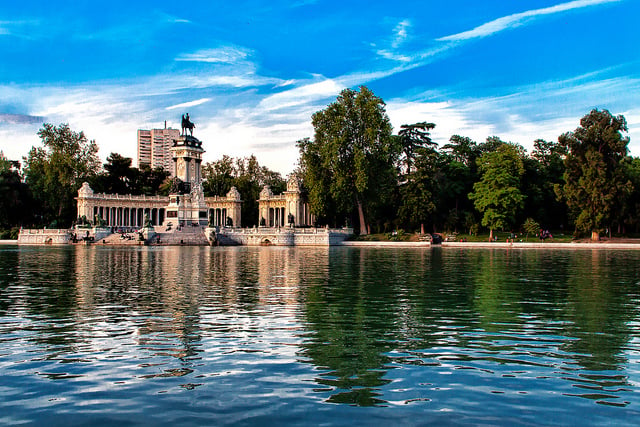
7. Retiro Park
Take a stroll through El Retiro Park to admire its monuments and sculptures, from the semicircular colonnades of King Alfonso XII and the beautiful fountains to the statues that line the Paseo de la Argentina. In the northwest corner of the park is the giant gate that once protected the city.
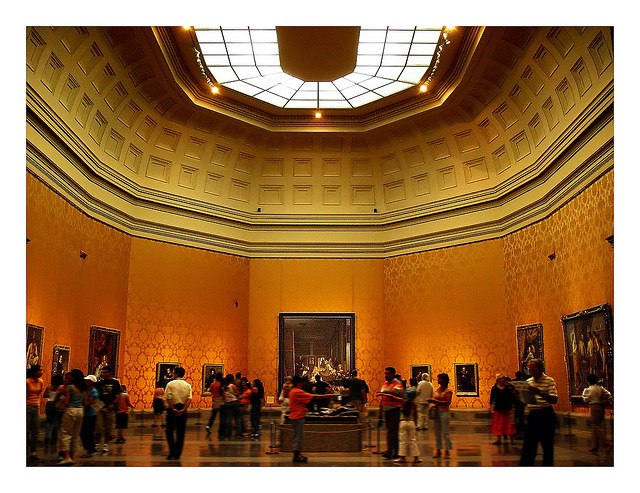
8. Prado Museum
Prado is one of the largest museums in the world, famous for its paintings and sculptures by masters of Spanish and world art, built in the middle of a green campus. Not using the popular curves of Gothic architecture, the building is made up of straight lines with countless giant pillars. However, the large space of the museum is not monotonous at all when dotted with sophisticated sculptures. Coming to Prado, visitors will hardly find a place with a full range of genres including 700 sculptures like here.
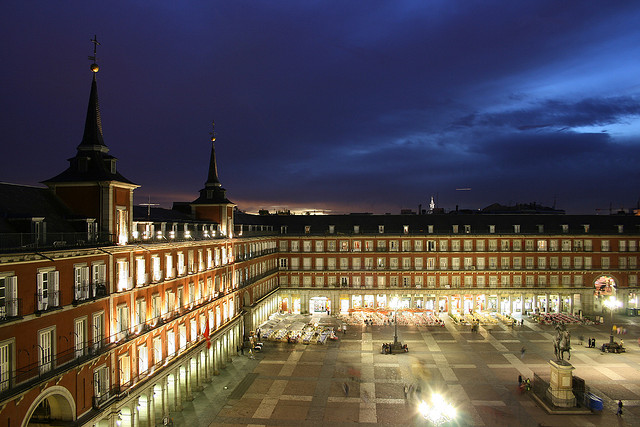
9. Mayor's Square
Plaza Mayor square has a capacity of 50,000 people and is one of the largest squares in the world.
The most beautiful school in Europe with the equestrian statue of King Felipe III. There are many performances by street artists to attract tourists, outdoor restaurants are bustling with customers enjoying bright red sangria cocktails in the midday sun. Churches with unique architecture also attract many groups of tourists to stop by.

10. Palacio Real
The Royal Palace (Palacio Real) is splendid at night and airy with a green garden for visitors to freely walk during the day. It will be the next destination that visitors cannot miss. At Christmas 1734, the castle burned down and it took 26 years to rebuild a new castle with 2,800 splendidly decorated rooms to hold court, receive diplomatic delegations, live in the Royal family, a library, a museum... The Palace also has a gallery of armor and combat equipment of the ancient musketeers and a Royal pharmacy. Outside the Palace is an area called Campo del Moro with forests, water tanks, parks... To the south of the Palace is the Royal Church. To the west is Plaza de Oriente, a skillfully trimmed flower park with a statue of King Felipe II on horseback in the middle.

 VI
VI EN
EN



